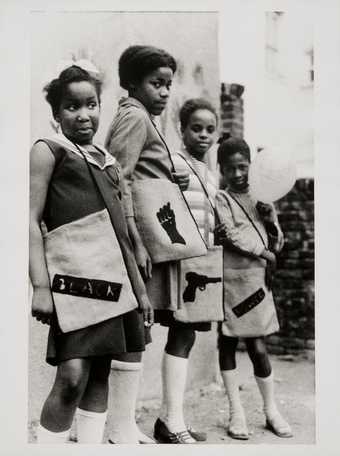
Neil Kenlock MBE, Black Panther school bags 1970, printed 2010. Tate. © reserved.
Ideas into Action 1965–1980
13 rooms in Modern and Contemporary British Art
Artists begin working with ideas and images that can be rapidly transmitted in an increasingly interconnected world, addressing political and social issues
The late 1960s is seen by many as a high point in cultural experimentation and revolutionary ideals. Artists begin developing art that is more concerned with ideas than aesthetics. They also want to democratise how art is produced, shared and experienced. These artists do not think of their work as something to be owned but instead as a way to exchange ideas. They emphasise process: how and why you make something is more important than what you produce. They often move out of their studios to work in the streets and don’t use traditional art materials. It seems to be an art of endless possibility, as artists embrace new materials, processes and actions.
As the 1960s becomes the 1970s, artists in Britain increasingly use these strategies to address social issues. These include: the personal and political injustices identified by the feminist movement, the poor condition of social housing, the legacy of British colonialism, experiences of racism, and escalating global political tension, including war in Vietnam.
Technological developments, exemplified by the 1969 moon landing of Apollo 11, also mark this era. Another of the most profound legacies of the time is the women’s liberation movement. Soon after the UK joins the European Communities in 1973, the global oil crisis contributes to economic recession and severe inflation. The country sees nationwide strikes by workers demanding that their pay keeps up with the rising cost of living. Many artists respond to this crisis that drives people to gather and protest.
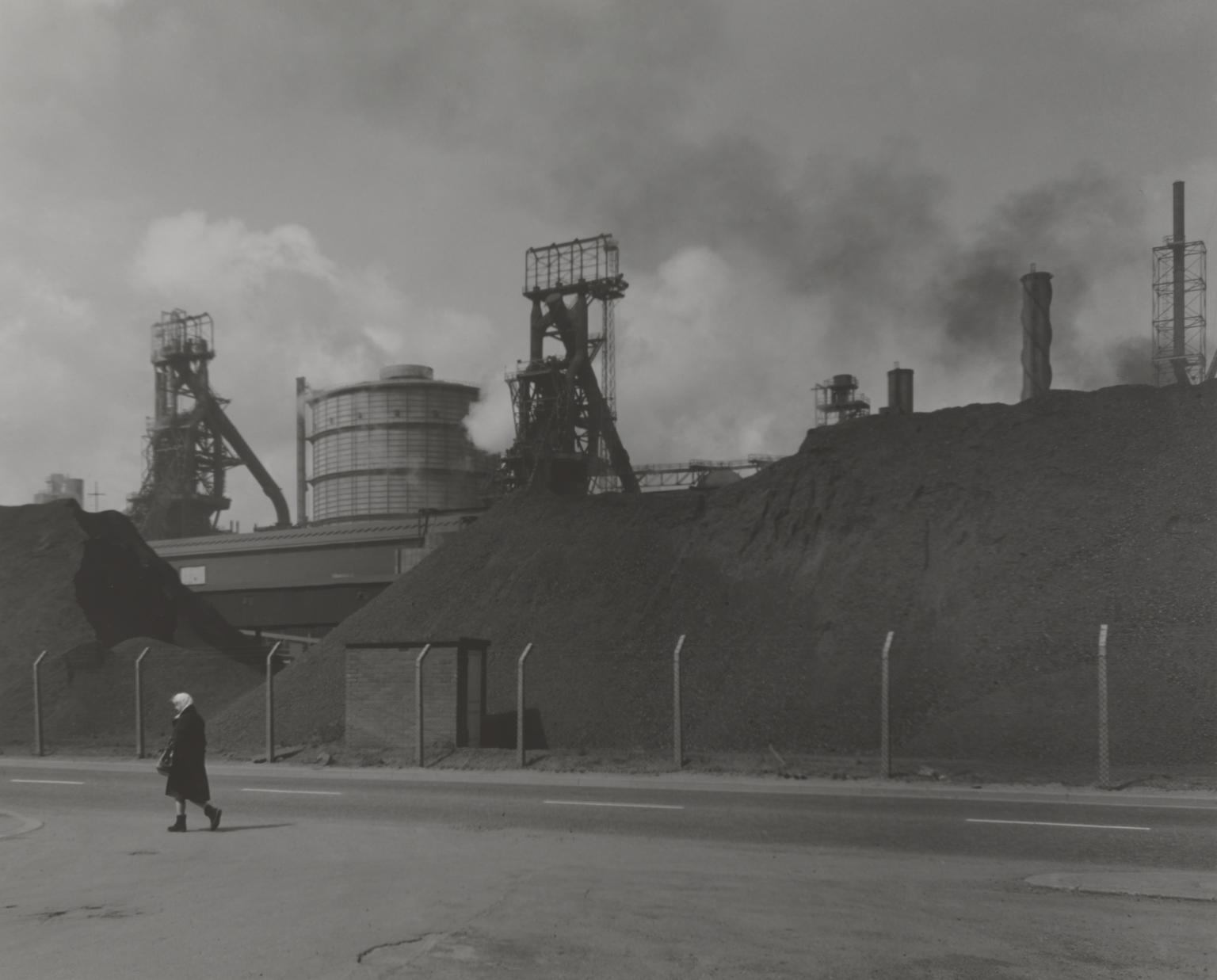
Chris Killip, Woman walking past blast furnaces, Grangetown, Teeside 1976, printed 2012–13
This group of images capture the changing landscapes of the northeast of England during a period of high unemployment and deindustrialisation. In these photographs, Chris Killip documents the windowless purpose-built homes that became typical across the northeast, the dying local shipbuilding industry, as well as community leaders such as a trade union official. Killip took these photographs after being made the Northern Arts Photography Fellow in Newcastle in 1975.
Gallery label, January 2025
1/21
artworks in Ideas into Action
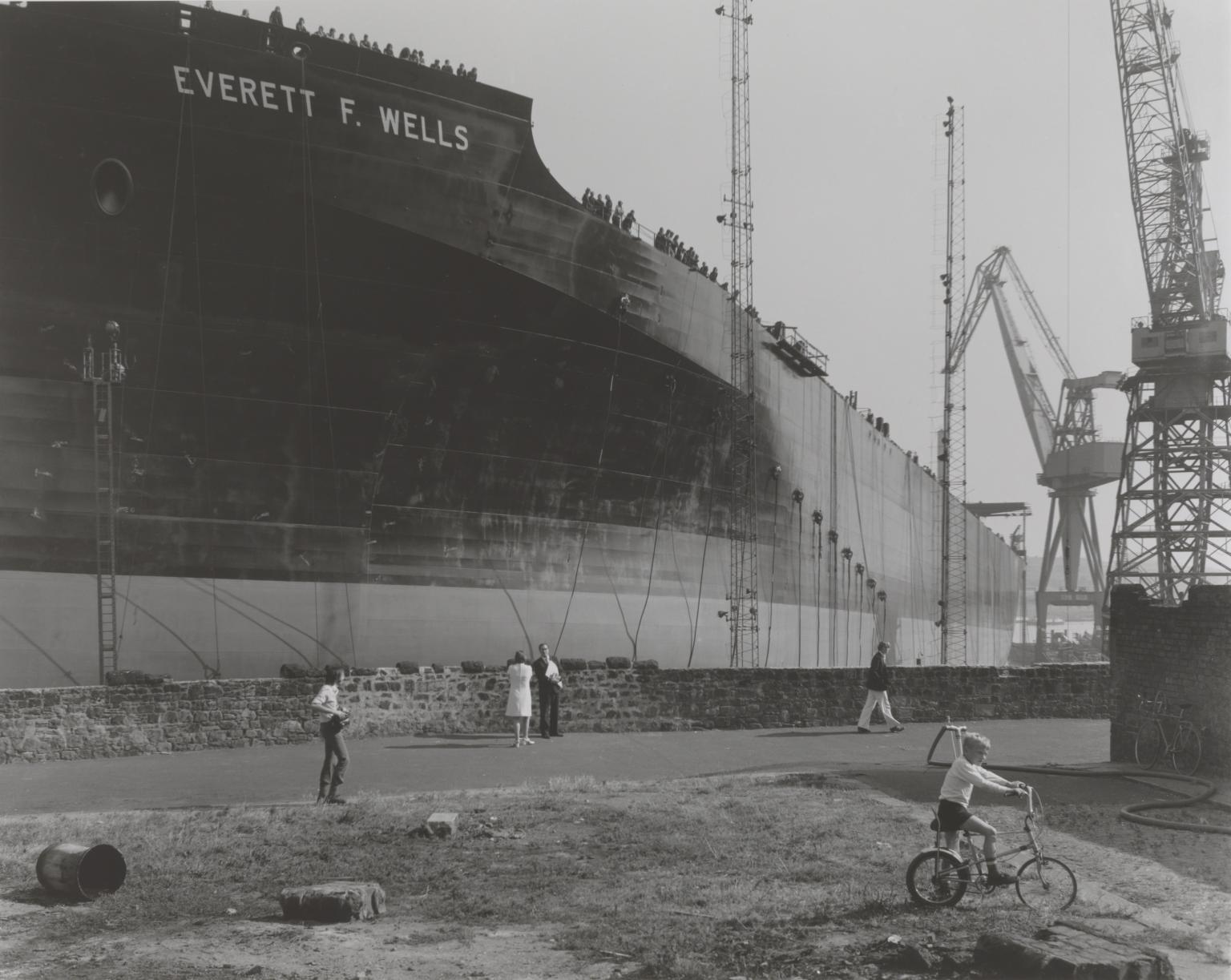
Chris Killip, Launch of the supertanker, Everett F. Wells, Wallsend, Tyneside 1976, printed 2012–13
This group of images capture the changing landscapes of the northeast of England during a period of high unemployment and deindustrialisation. In these photographs, Chris Killip documents the windowless purpose-built homes that became typical across the northeast, the dying local shipbuilding industry, as well as community leaders such as a trade union official. Killip took these photographs after being made the Northern Arts Photography Fellow in Newcastle in 1975.
Gallery label, January 2025
2/21
artworks in Ideas into Action
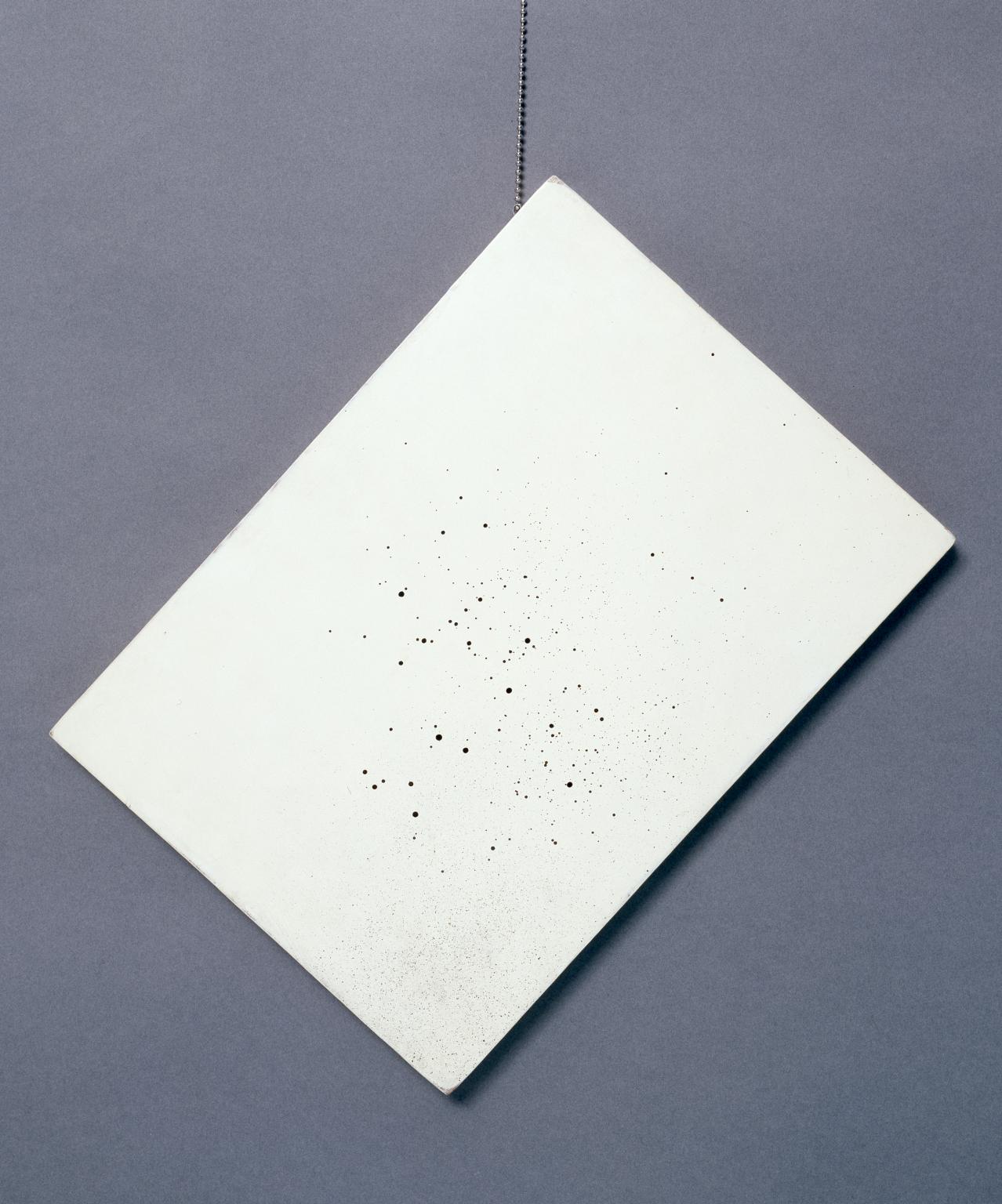
John Latham, One-Second Drawing (17” 2002) (Time Signature 5:1) 1972
This work comprises a wooden board painted white and covered with black flecks of paint. It is a part of a series of ‘One Second Drawings’ which John Latham began in 1970, each produced by spraying black paint onto a white board for one second. Through this simple act, Lathan aimed to represent his concept of a ‘least event’, which is the shortest departure from a state of nothingness. The numerical sequence in the title (17” 2002) records the time the work was executed: the 17th second of the 20th minute of the second hour.
Gallery label, January 2025
3/21
artworks in Ideas into Action
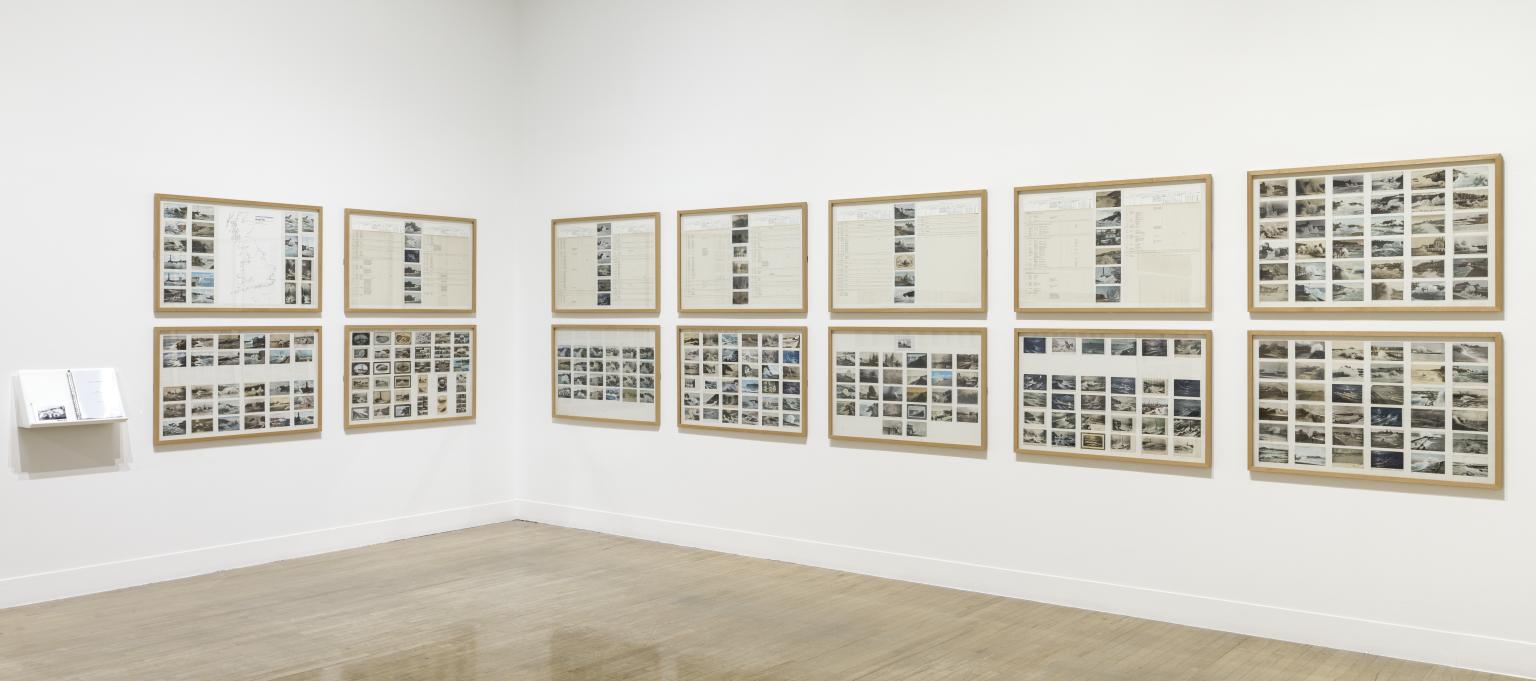
Susan Hiller, Dedicated to the Unknown Artists 1972–6
This work consists of over 300 postcards of waves crashing onto shores around Britain. Using a process Susan Hiller described as her ‘methodical-methodological approach’, she organised the postcards by category and displayed them alongside a map marked with the locations depicted and tables of data relating to each postcard. Hiller viewed the work as a collaboration with the overlooked and forgotten artists who painted, photographed or hand-tinted the images on the postcards.
Gallery label, January 2025
4/21
artworks in Ideas into Action
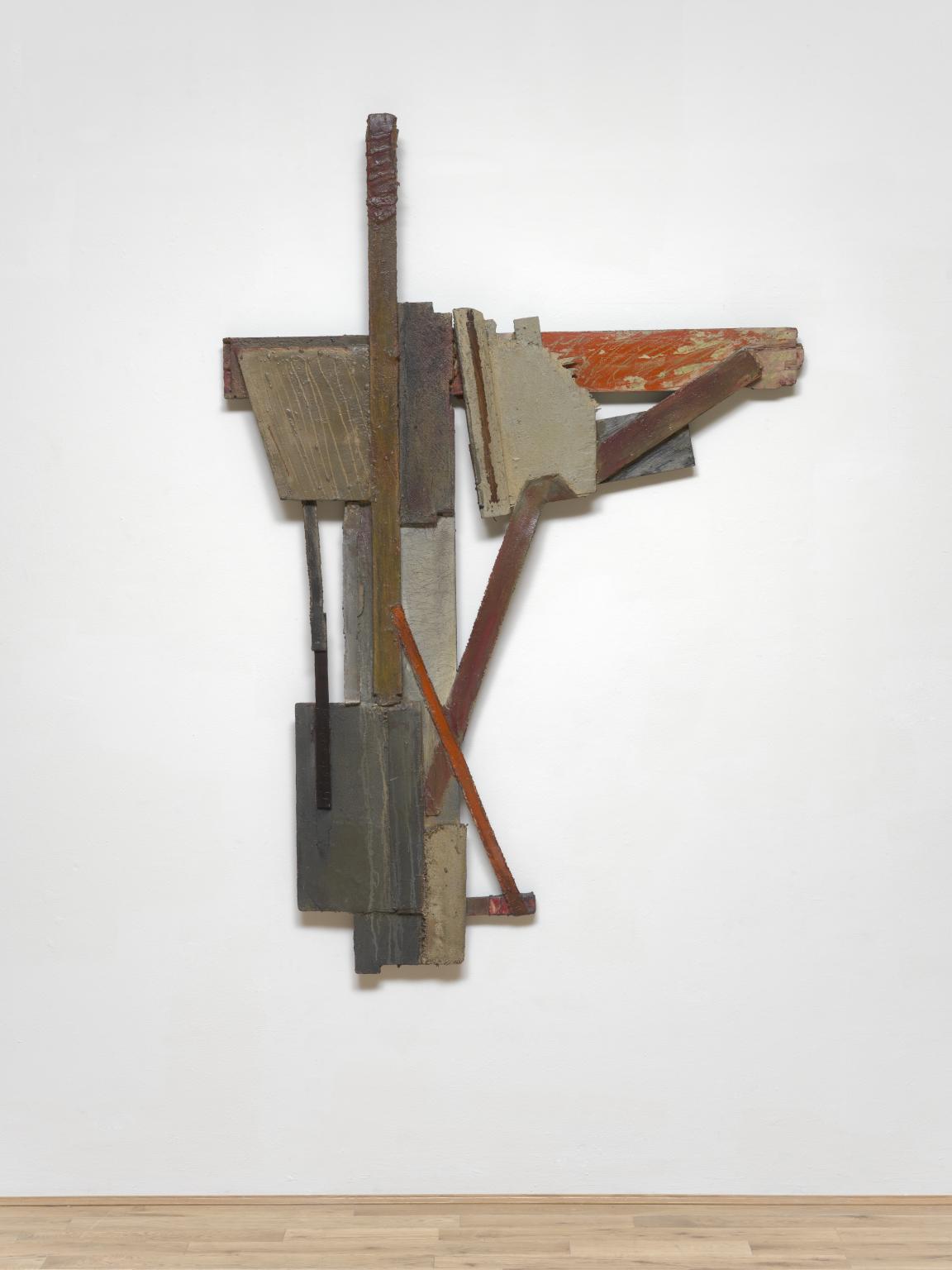
Janet Nathan, Zeloso 1979
Janet Nathan’s constructions are made from a range of found objects. She collected driftwood, resin and painted wood from skips or from the shoreline, most often along the River Thames. Coastlines were an important source of inspiration for the artist, both in terms of materials and subject matter. The work’s asymmetrical arrangement forms a cross shape, a recurring symbol in the artist’s practice. Although apparently abstract at first glance, the work could evoke the form of a dock, jetty or mudflat.
Gallery label, January 2025
5/21
artworks in Ideas into Action
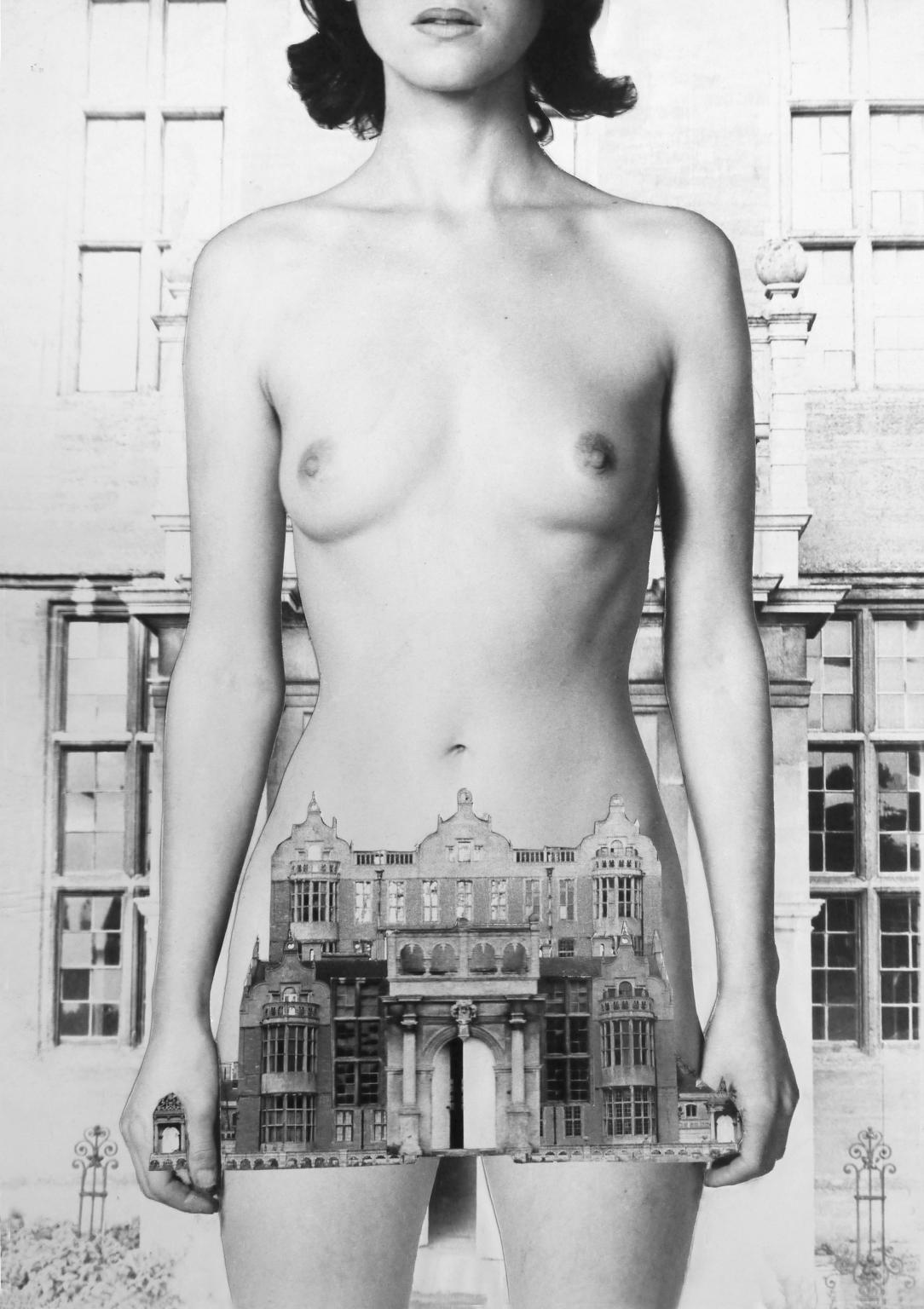
Penny Slinger, Perspective 1970–7
These photo-collages are part of a series of self-portraits Penny Slinger made in the near derelict Lilford Hall in Northamptonshire. Speaking of the photographs, Slinger found: ‘They had an evocative power, which compelled me to use them as the basis for a series of collages. I felt that this Stately Home had something yet to contribute to my own exploration of the psyche.’ During the seven-year process of making the series, Slinger found herself ‘emerging from a nightmare of others’ projections.’ Her photo-collages were published in 1977 as a book titled An Exorcism.
Gallery label, January 2025
6/21
artworks in Ideas into Action
Sir Horace Ové CBE, Darcus Howe Speaks at the Mangrove Demonstration 1970, printed 2023
On 9 August 1970, a march took place to protest the police harassment of Black communities, including at The Mangrove, a Caribbean restaurant in Notting Hill, London. Nine protesters were charged with incitement to riot. In these photographs, Horace Ové captures significant moments from the march and subsequent trial. All nine activists were eventually acquitted, signalling the first judicial acknowledgment of racial hatred within the Metropolitan Police. These photographs come from a body of work Ové made between 1967 and 1970 documenting key events in the British civil rights movement.
Gallery label, August 2024
7/21
artworks in Ideas into Action
Sir Horace Ové CBE, The Mangrove Nine at Court House 1970, printed 2023
On 9 August 1970, a march took place to protest the police harassment of Black communities, including at The Mangrove, a Caribbean restaurant in Notting Hill, London. Nine protesters were charged with incitement to riot. In these photographs, Horace Ové captures significant moments from the march and subsequent trial. All nine activists were eventually acquitted, signalling the first judicial acknowledgment of racial hatred within the Metropolitan Police. These photographs come from a body of work Ové made between 1967 and 1970 documenting key events in the British civil rights movement.
Gallery label, August 2024
8/21
artworks in Ideas into Action

Rose English, Harriet and Plait 1976
Harriet and Plait depicts the artist’s sister Harriet sitting in front of a window and wearing a long, plaited wig. The sequence of photographs captures the tip of her plait being snipped off and placed on a plate, resembling a triangle of pubic hair. Rose English took the photographs in the dining room of her mother’s house in Herefordshire. English strove to challenge traditional categories in art in her practice, moving from working with objects to events. In the early 1970s, she began to incorporate hand-made items – such as this wig – in staged settings that she would later photograph.
Gallery label, January 2025
9/21
artworks in Ideas into Action
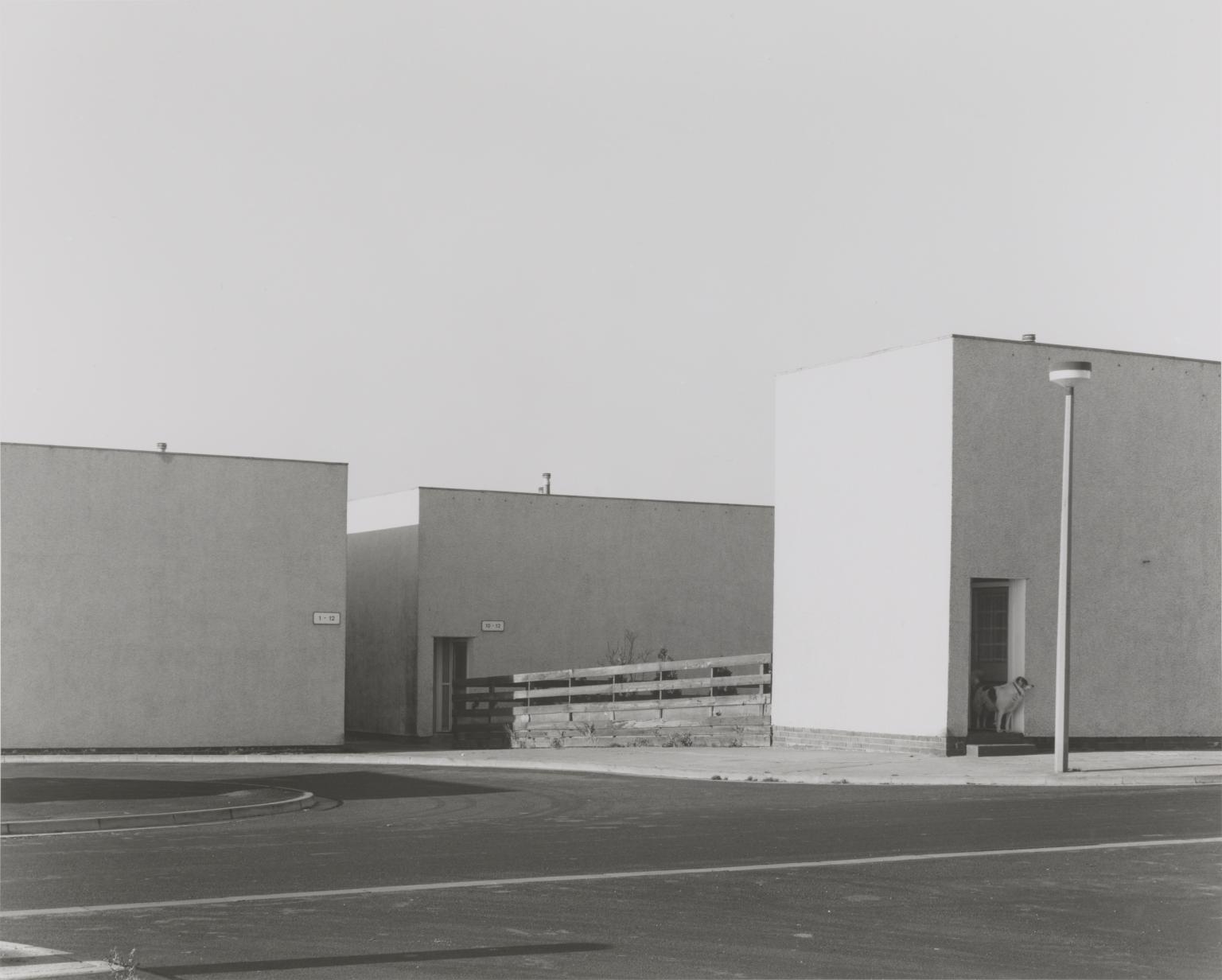
Chris Killip, Windowless houses, Killingworth New Town, Tyneside 1975, printed 2012–13
This group of images capture the changing landscapes of the northeast of England during a period of high unemployment and deindustrialisation. In these photographs, Chris Killip documents the windowless purpose-built homes that became typical across the northeast, the dying local shipbuilding industry, as well as community leaders such as a trade union official. Killip took these photographs after being made the Northern Arts Photography Fellow in Newcastle in 1975.
Gallery label, January 2025
10/21
artworks in Ideas into Action
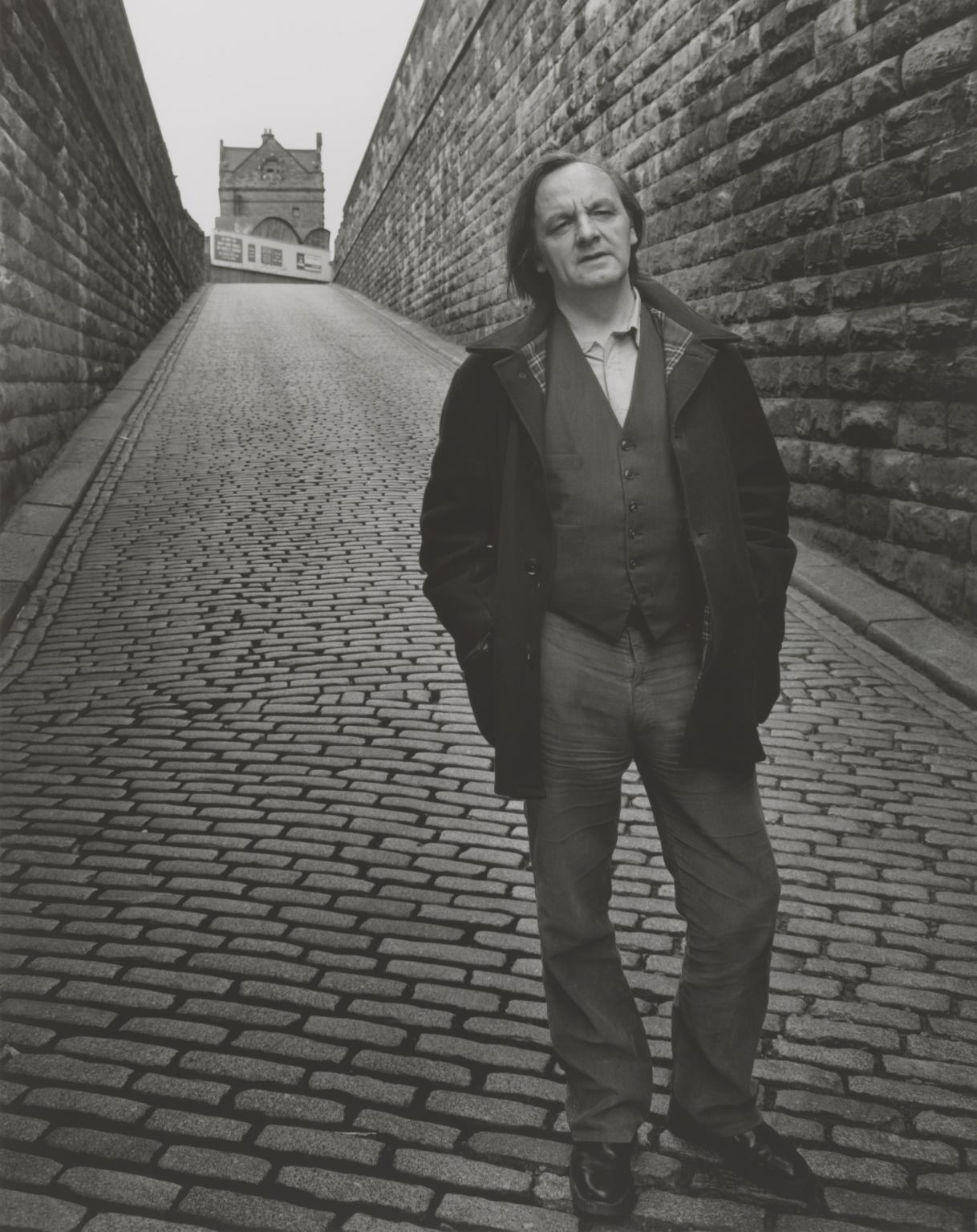
Chris Killip, Trade Union Official, Scottswood, Tyneside 1979, printed 2012–13
This group of images capture the changing landscapes of the northeast of England during a period of high unemployment and deindustrialisation. In these photographs, Chris Killip documents the windowless purpose-built homes that became typical across the northeast, the dying local shipbuilding industry, as well as community leaders such as a trade union official. Killip took these photographs after being made the Northern Arts Photography Fellow in Newcastle in 1975.
Gallery label, January 2025
11/21
artworks in Ideas into Action
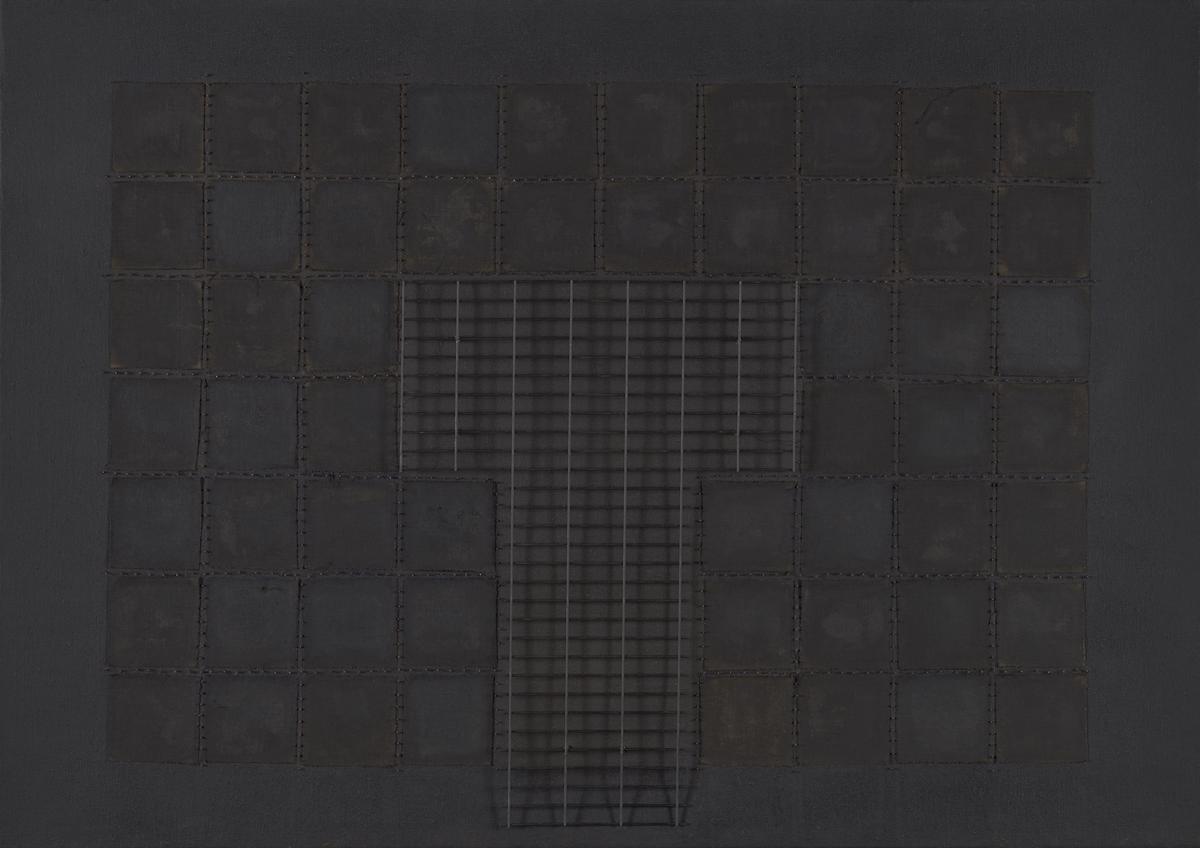
Donald Locke, Dageraad From the Air 1978–9
Dageraad was a sugar plantation. In 1763 it was the site of Guyana’s first rebellion of enslaved people. The painting evokes the plantation system that shaped Guyana’s history under Dutch and British colonial rule. The grid reflects the intervention on the land, sectioned by dykes and drainage canals. Donald Locke said: ‘In the Caribbean, the most dominant sociological event is the plantation system. I grew up at a time when the plantation system was still in existence. It dominated the sky; it dominated your life from beginning to end.’
Gallery label, September 2023
12/21
artworks in Ideas into Action
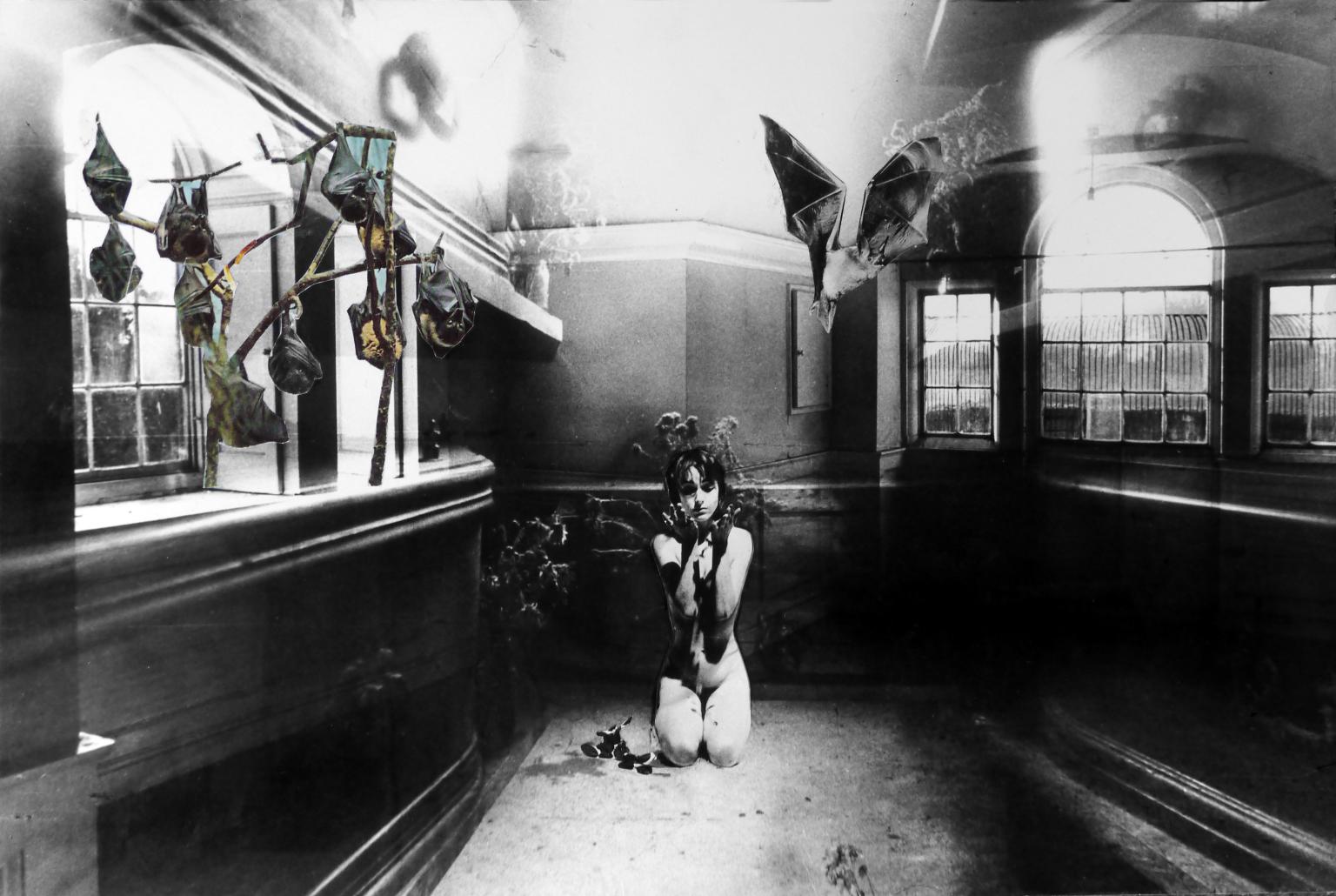
Penny Slinger, Dust to Dust 1970–7
These photo-collages are part of a series of self-portraits Penny Slinger made in the near derelict Lilford Hall in Northamptonshire. Speaking of the photographs, Slinger found: ‘They had an evocative power, which compelled me to use them as the basis for a series of collages. I felt that this Stately Home had something yet to contribute to my own exploration of the psyche.’ During the seven-year process of making the series, Slinger found herself ‘emerging from a nightmare of others’ projections.’ Her photo-collages were published in 1977 as a book titled An Exorcism.
Gallery label, January 2025
13/21
artworks in Ideas into Action
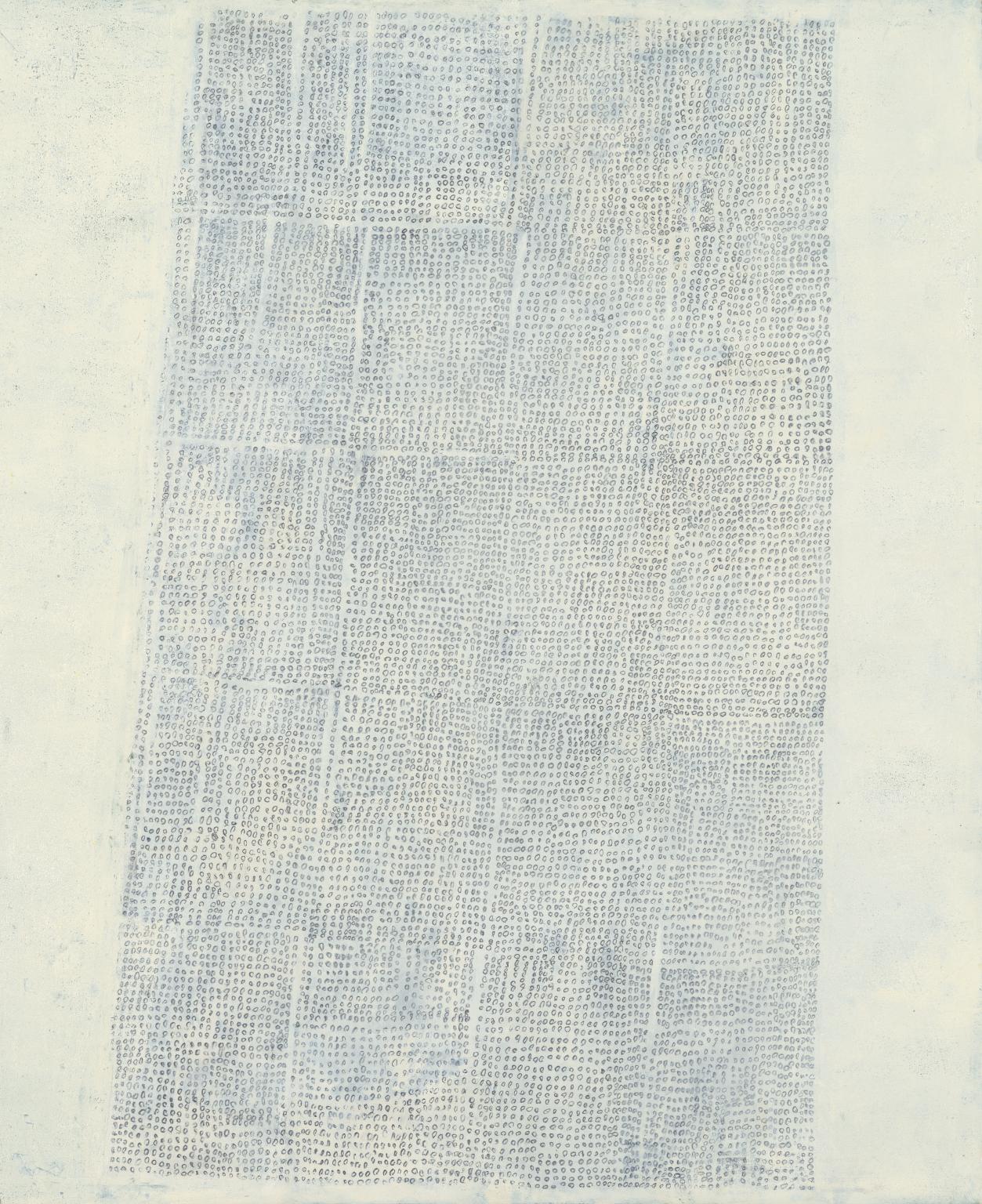
Romany Eveleigh, Pages 1976
Romany Eveleigh covered a sheet of paper with a layer of black ink, followed by a layer of white oil paint. Scratching hundreds of small circles into the wet paint, she revealed the dark ink beneath. The resulting pattern, which can be read as repetitions of the letter ‘o’, is reminiscent of text. The formation of the circles into columns suggests the pages of a book, with blocks of text and empty margins. Eveleigh’s use of the visual language of writing and printing was inspired by the tabloid newsprint pages plastered on walls in the streets of Rome where she lived.
Gallery label, January 2025
14/21
artworks in Ideas into Action
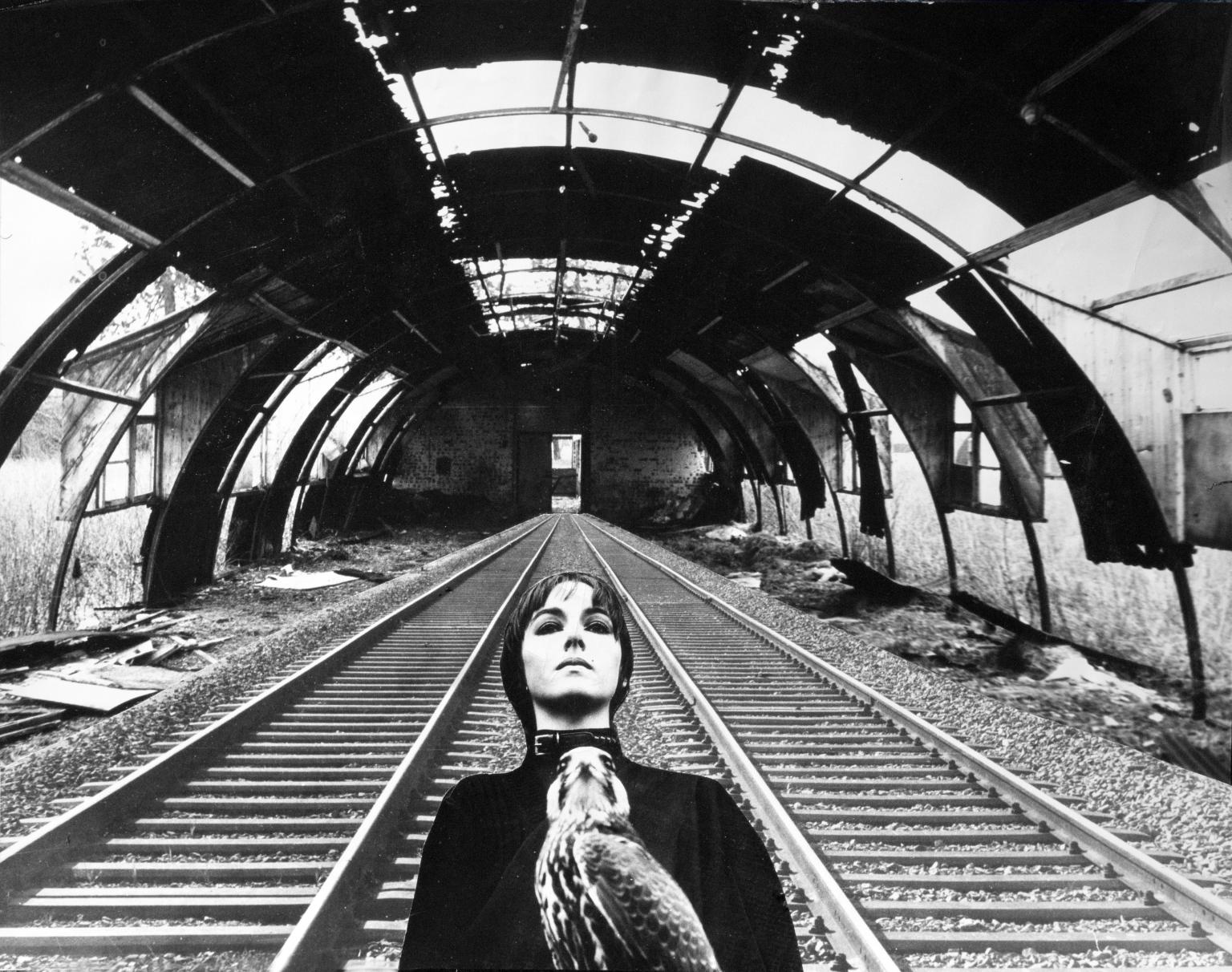
Penny Slinger, End of the Line 2 1977
These photo-collages are part of a series of self-portraits Penny Slinger made in the near derelict Lilford Hall in Northamptonshire. Speaking of the photographs, Slinger found: ‘They had an evocative power, which compelled me to use them as the basis for a series of collages. I felt that this Stately Home had something yet to contribute to my own exploration of the psyche.’ During the seven-year process of making the series, Slinger found herself ‘emerging from a nightmare of others’ projections.’ Her photo-collages were published in 1977 as a book titled An Exorcism.
Gallery label, January 2025
15/21
artworks in Ideas into Action
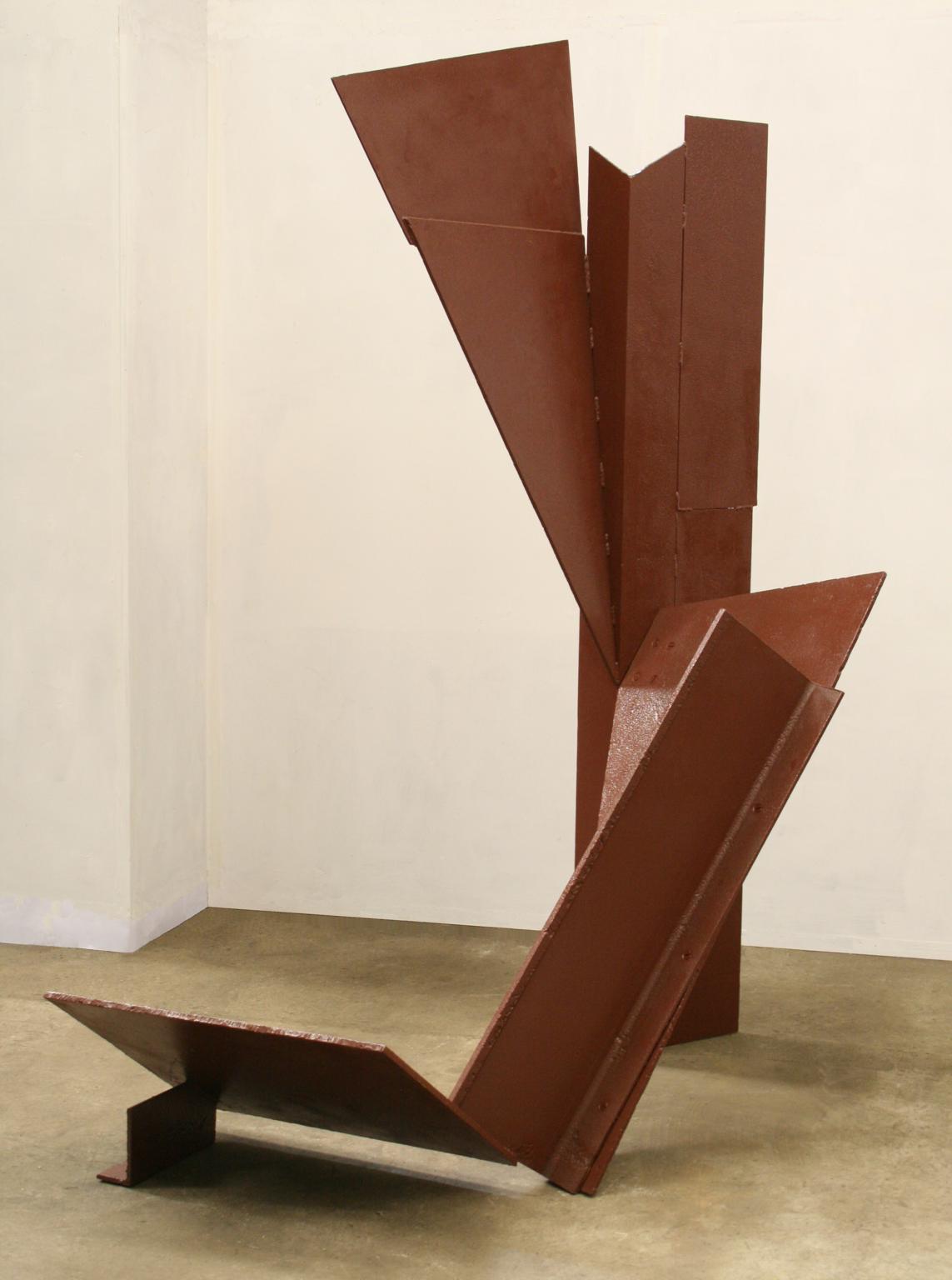
Katherine Gili, Vertical IV 1975
Vertical IV is constructed from three steel planes bolted and welded together, sprayed with zinc and painted brown. Its abstract form creates different shapes as you move around the sculpture. Katherine Gili was one of few women artists working with industrial steel in Britain during the 1970s. She says, ‘Steel and the use of construction continues to have huge potential as a material for making sculpture, still so much to discover’. She emphasised the material qualities of the steel in this work by maintaining its rough edges and untidy paint finish.
Gallery label, January 2025
16/21
artworks in Ideas into Action
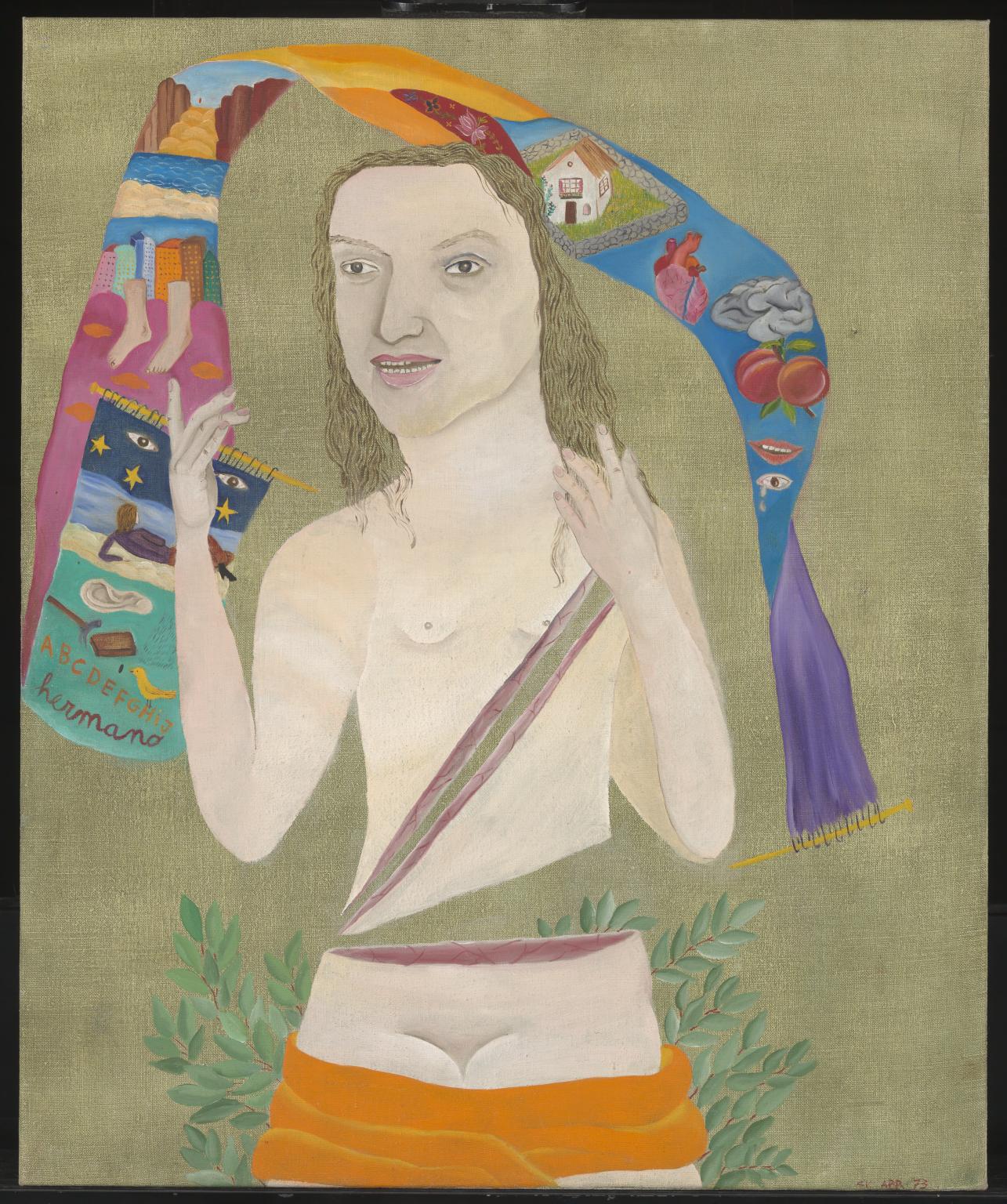
Cecilia Vicuña, Violeta Parra 1973
This painting is part of a series called Heroes of the Revolution. In 1952, singer and folklorist Violeta Parra embarked on a tour around rural Chile, recording and compiling folk music. She rescued a tradition that most Chileans had forgotten. This led to an artistic movement known as Nueva Canción Chilena (New Chilean Song). The painting commemorates Parra’s work and struggle before she took her own life in 1967. ‘My paintings are political in a personal way’, Vicuña has explained. ‘My canvases are born as representations of a socialist paradise where everything is possible’.
Gallery label, September 2023
17/21
artworks in Ideas into Action
Sir Horace Ové CBE, Barbara Beese at the Mangrove Demonstration 1970, printed 2023
On 9 August 1970, a march took place to protest the police harassment of Black communities, including at The Mangrove, a Caribbean restaurant in Notting Hill, London. Nine protesters were charged with incitement to riot. In these photographs, Horace Ové captures significant moments from the march and subsequent trial. All nine activists were eventually acquitted, signalling the first judicial acknowledgment of racial hatred within the Metropolitan Police. These photographs come from a body of work Ové made between 1967 and 1970 documenting key events in the British civil rights movement.
Gallery label, August 2024
18/21
artworks in Ideas into Action
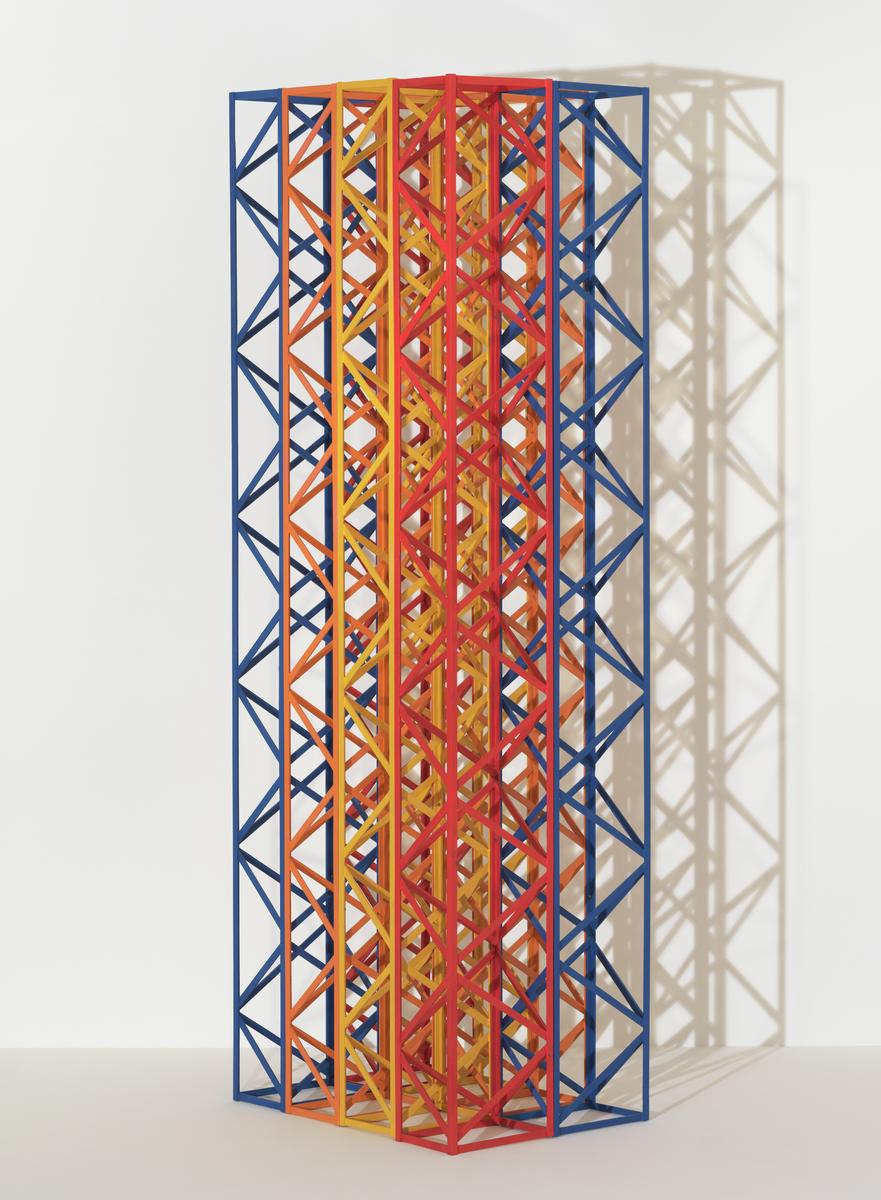
Rasheed Araeen, Rang Baranga 1969
Rang Baranga is made from an intersecting lattice structure composed of eight individual columns, each painted in a sequence of contrasting colours. The title is an Urdu term meaning ‘of many colours’. Trained as a civil engineer in Karachi, Pakistan, Rasheed Araeen creates sculptures that reference architectural and engineering structures as well as modernist art. In his search for stable yet open configurations, he found inspiration in nature, particularly in the movement of fire and water. Araeen was also struck by the sculptural language of Anthony Caro (displayed in this room), whose work he encountered after moving to London in 1964.
Gallery label, August 2024
19/21
artworks in Ideas into Action

Mary Kelly, Post-Partum Document. Documentation III: Analysed Markings And Diary Perspective Schema (Experimentum Mentis III: Weaning from the Dyad) 1975
Chalk and crayon drawings by Mary Kelly’s son are overlayed with transcriptions, annotations and reflections based on their interactions as he began nursery. These panels are the third group of a six-part series, each documenting a formative moment in Kelly’s son's early life. Kelly has stated that Post-Partum Document is not ‘autobiographical’. She instead uses her story to suggest ‘an interplay of voices – the mother’s experience, feminist analysis, academic discussion, political debate’. The work subverts romanticised depictions of the mother-child relationship, presenting the experience as inevitably bound up with societal norms and gendered expectations.
Gallery label, January 2025
20/21
artworks in Ideas into Action
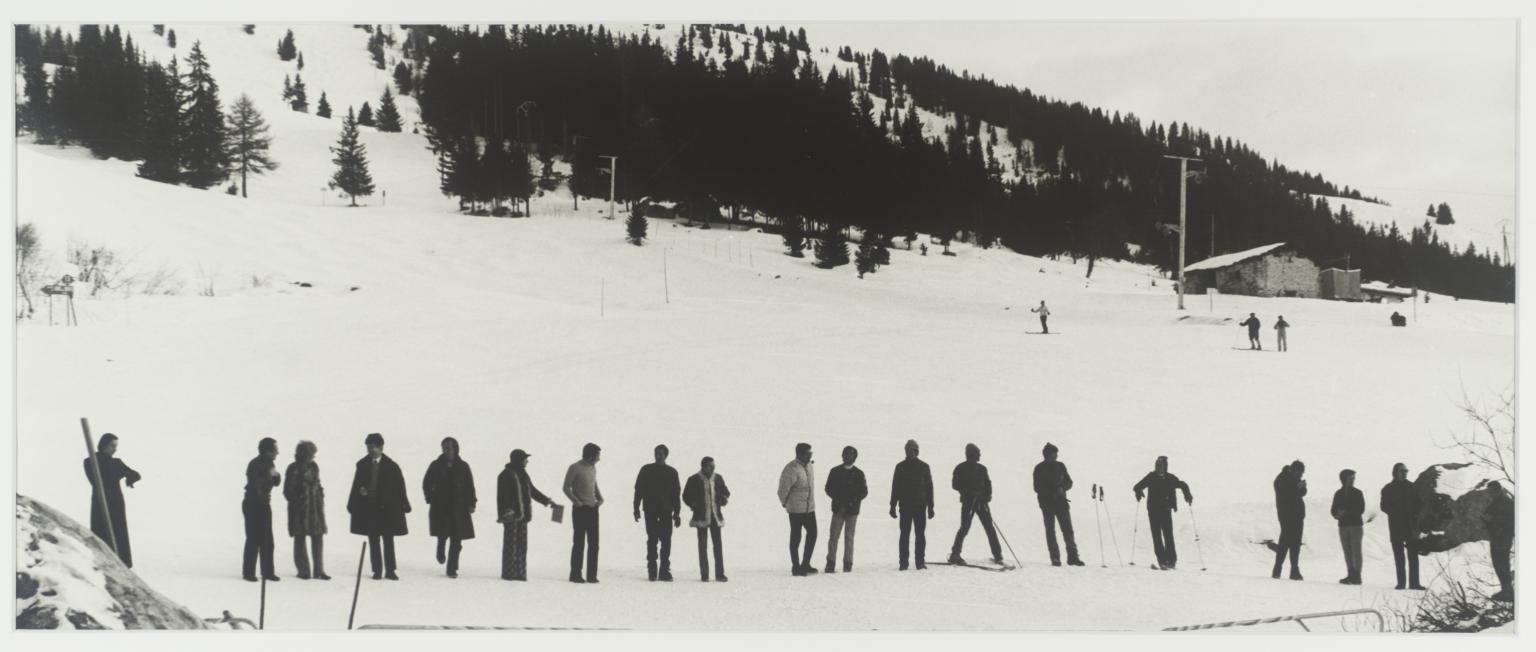
David Lamelas, Time 1970
This photograph documents the first presentation of Time, a performance conceived by David Lamelas, in Les Arcs in the French Alps. The performance begins when the first participant tells the time to the person next to them. They ‘receive’ the time and ‘hold on to it’ before sharing it with the following person. The process continues until the last person is reached, who then announces the time ‘to the world’ in a language of their choice. Lamelas says: ‘We may come from different cultures, be of different color or religion, but we all share the one single time of the present.’
Gallery label, January 2025
21/21
artworks in Ideas into Action
Art in this room






Sorry, no image available
Sorry, no image available









Sorry, no image available



You've viewed 6/21 artworks
You've viewed 21/21 artworks
